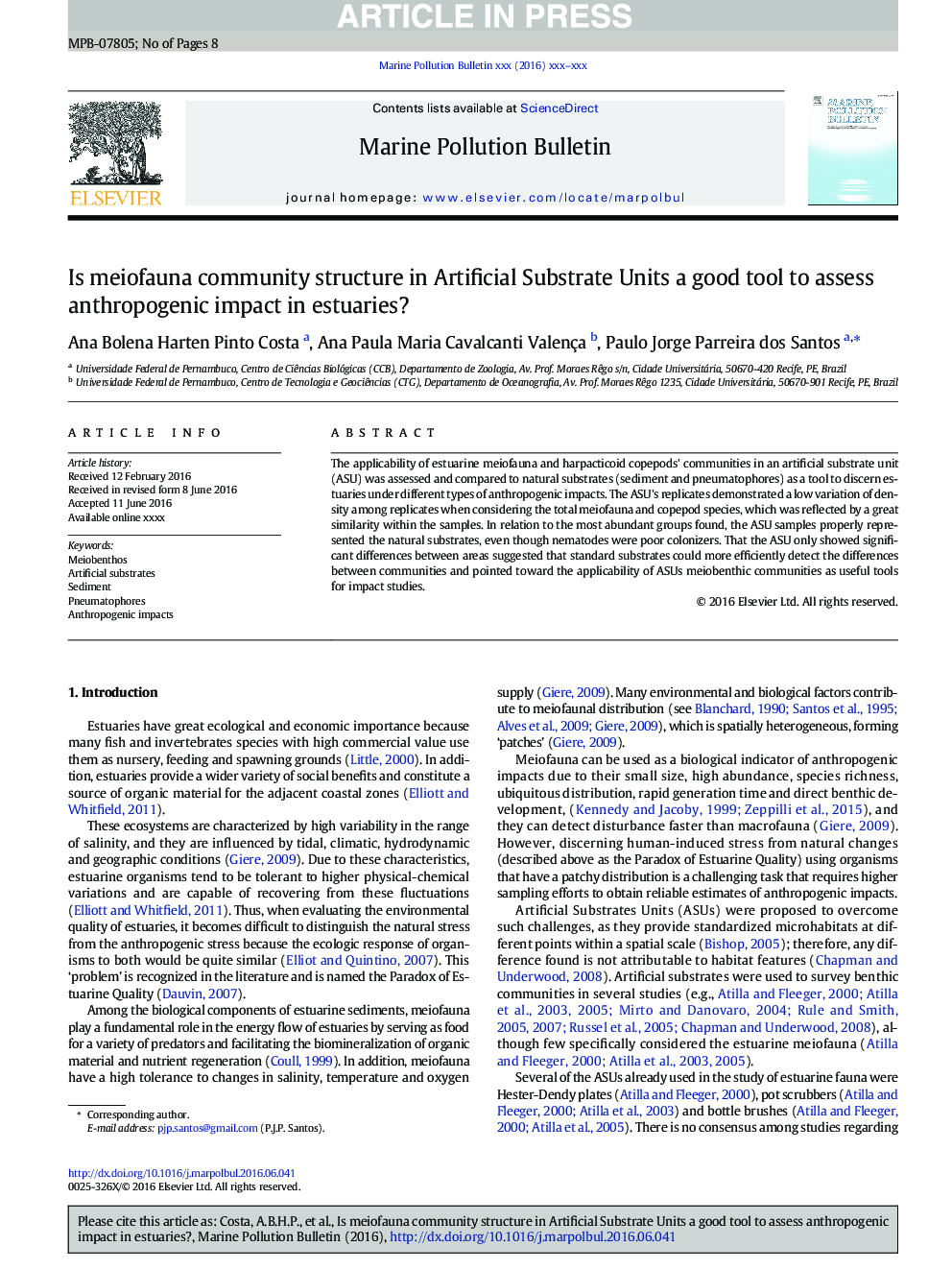| Article ID | Journal | Published Year | Pages | File Type |
|---|---|---|---|---|
| 6355695 | Marine Pollution Bulletin | 2016 | 8 Pages |
Abstract
The applicability of estuarine meiofauna and harpacticoid copepods' communities in an artificial substrate unit (ASU) was assessed and compared to natural substrates (sediment and pneumatophores) as a tool to discern estuaries under different types of anthropogenic impacts. The ASU's replicates demonstrated a low variation of density among replicates when considering the total meiofauna and copepod species, which was reflected by a great similarity within the samples. In relation to the most abundant groups found, the ASU samples properly represented the natural substrates, even though nematodes were poor colonizers. That the ASU only showed significant differences between areas suggested that standard substrates could more efficiently detect the differences between communities and pointed toward the applicability of ASUs meiobenthic communities as useful tools for impact studies.
Related Topics
Physical Sciences and Engineering
Earth and Planetary Sciences
Oceanography
Authors
Ana Bolena Harten Pinto Costa, Ana Paula Maria Cavalcanti Valença, Paulo Jorge Parreira dos Santos,
